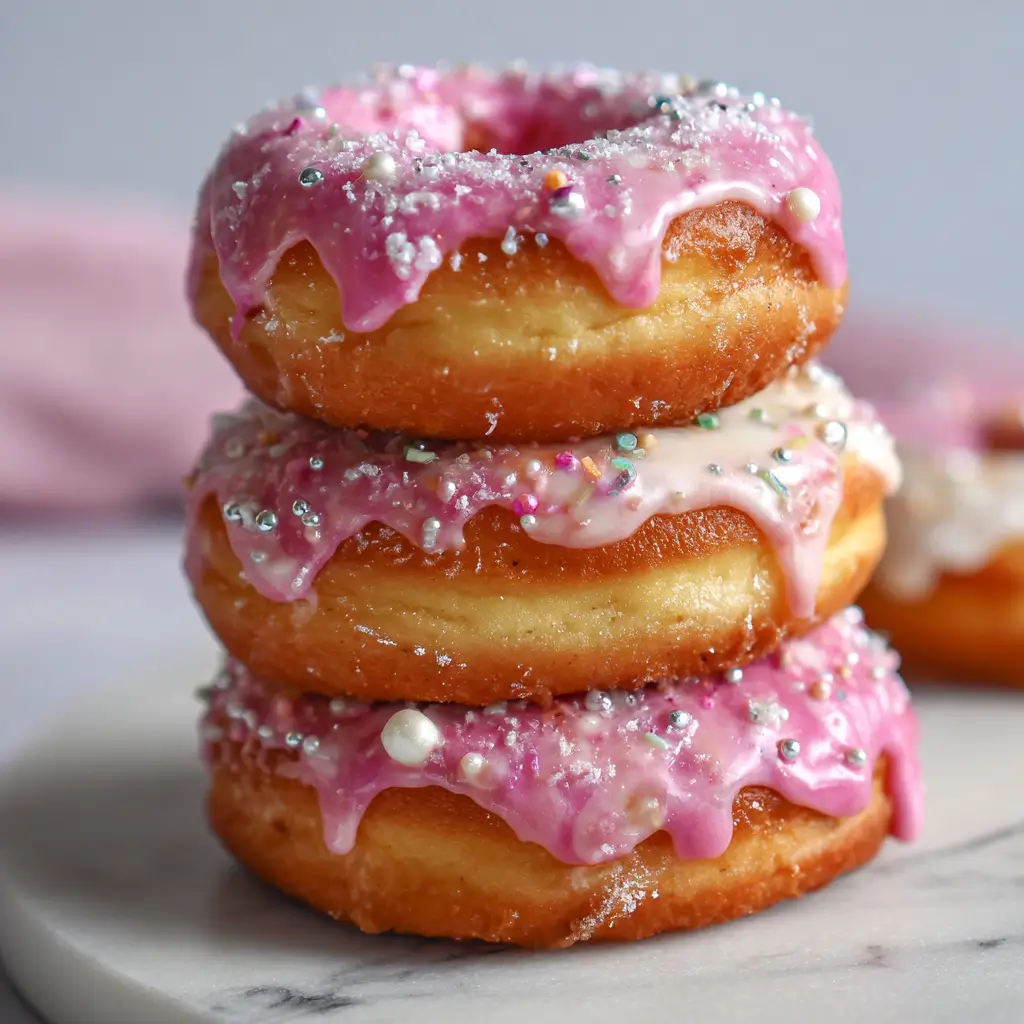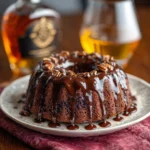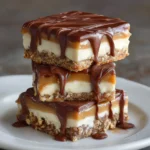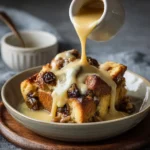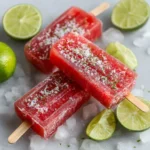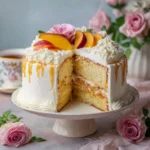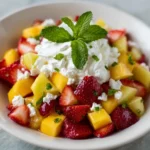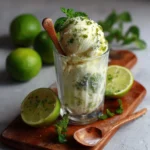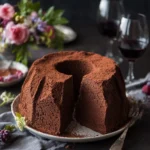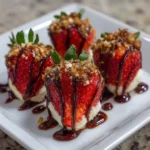Champagne Donuts: A Luxurious Twist on a Classic Treat
Indulge in the decadent world of Champagne Donuts, where elegance meets comfort food. These airy, golden-fried delights are infused with real champagne, offering a subtle effervescence and refined flavor that elevates the humble donut into a gourmet dessert. Perfect for brunches, bridal showers, holiday gatherings, or simply as an extravagant weekend treat, Champagne Donuts blend sophistication with the nostalgic joy of freshly made pastries. With their delicate crumb, light sweetness, and a hint of bubbly sophistication, they’re more than just a dessert—they’re an experience.
The History of Champagne Donuts
While traditional donuts trace their origins back to Dutch settlers in early America—known then as “olykoeks” or oily cakes—the concept of infusing alcohol into dough for enhanced flavor and texture has deep roots in European baking traditions. The idea of using champagne in desserts emerged during the late 19th and early 20th centuries, particularly in French and Belgian patisseries, where bakers experimented with wine-based reductions and fermented liquids to enrich pastry doughs.
Champagne Donuts, as we know them today, likely gained popularity in upscale American bakeries during the mid-20th century, coinciding with the rise of cocktail culture and the fascination with luxury ingredients. The use of champagne not only adds a unique floral and yeasty note but also contributes to a lighter texture due to its carbonation. Over time, these donuts evolved from novelty items at high-end confectioneries to beloved artisanal treats featured at weddings, New Year’s Eve parties, and fine dining dessert menus. Today, they represent a fusion of indulgence, craftsmanship, and celebration—all wrapped in one soft, pillowy bite.
Ingredients Breakdown: What Makes Champagne Donuts Special
The magic of Champagne Donuts lies in the careful balance of traditional donut ingredients elevated by the addition of premium champagne. Each component plays a vital role in creating a tender, flavorful, and luxuriously textured pastry.
- All-Purpose Flour: Provides structure and a soft crumb. Sifted to ensure no lumps, it creates a smooth batter.
- Granulated Sugar: Adds sweetness and helps with browning during frying. It also balances the tartness of the champagne.
- Instant Yeast: Essential for leavening, giving the donuts their airy, fluffy texture. Unlike active dry yeast, instant yeast doesn’t require proofing and can be mixed directly into the flour.
- Salt: Enhances overall flavor and controls yeast activity for even rising.
- Eggs: Bind the ingredients together and contribute richness and color to the final product.
- Unsalted Butter (melted): Adds moisture and a buttery aroma. Using unsalted allows better control over salt levels.
- Warm Milk: Activates the yeast and hydrates the dough. Must be between 105°F and 110°F—too hot will kill the yeast, too cold won’t activate it.
- Dry Champagne (or Sparkling Wine): The star ingredient! Adds acidity, subtle fruit notes, and carbonation that results in a lighter texture. Choose a brut or extra dry variety for the best flavor profile.
- Vanilla Extract: Deepens the flavor complexity with warm, aromatic notes.
- Vegetable Oil (for frying): Neutral-flavored oil with a high smoke point ensures clean frying without overpowering the delicate champagne taste.
- Confectioners’ Sugar (for glaze): Forms the base of the shimmering champagne-infused glaze.
- Extra Champagne (for glaze): Concentrated reduction intensifies the flavor and gives the glaze a glossy finish.
Optional garnishes include edible gold dust, lemon zest, fresh berries, or crystallized violets for a truly opulent presentation.
Step-by-Step Recipe: How to Make Champagne Donuts at Home
Creating Champagne Donuts from scratch may seem daunting, but with patience and attention to detail, you can achieve bakery-quality results in your own kitchen. Follow this detailed guide for perfect donuts every time.
Part 1: Preparing the Dough
- Activate the Yeast Mixture: In a small bowl, combine ½ cup warm milk (105–110°F), 1 tablespoon granulated sugar, and 2¼ teaspoons instant yeast. Let sit for 5–10 minutes until foamy if using active dry yeast (optional step for instant). However, since we’re using instant yeast, you can skip this and mix directly.
- Mix Dry Ingredients: In a large mixing bowl or stand mixer fitted with a dough hook, whisk together 3 cups sifted all-purpose flour, ¼ teaspoon salt, and remaining ⅓ cup sugar.
- Add Wet Ingredients: To the dry mix, add 2 large eggs, ¼ cup melted unsalted butter, ½ cup chilled dry champagne, 1 teaspoon vanilla extract, and the activated yeast mixture (or just the warm milk and yeast if skipping activation).
- Knead the Dough: Mix on low speed for 2 minutes, then increase to medium and knead for 6–8 minutes until the dough is smooth, elastic, and slightly sticky. Add up to ¼ cup more flour if too wet, but avoid over-flouring.
- First Rise: Place the dough in a lightly greased bowl, cover with a damp cloth or plastic wrap, and let rise in a warm place for 1–1.5 hours, or until doubled in size.
Part 2: Shaping and Frying the Donuts
- Punch Down & Roll Out: Gently punch down the risen dough and turn it onto a floured surface. Roll out to about ½ inch thickness using a rolling pin.
- Cut the Donuts: Use a round biscuit cutter (about 3 inches in diameter) to cut out donuts. Use a smaller cutter (1 inch) to remove the centers. Re-roll scraps once for additional donuts.
- Second Rise: Transfer cut donuts and holes to a parchment-lined tray, cover loosely, and let rise for 30–45 minutes until puffy.
- Heat the Oil: In a heavy-bottomed pot or deep fryer, heat 2–3 inches of vegetable oil to 350°F. Use a candy thermometer for accuracy.
- Fry the Donuts: Carefully place 2–3 donuts at a time into the hot oil. Fry for 1–2 minutes per side, flipping once, until golden brown. Remove with a slotted spoon and drain on a wire rack set over paper towels.
- Fry the Holes: Donut holes take only about 1 minute total, turning frequently for even cooking.
Part 3: Making the Champagne Glaze
- Reduce the Champagne: In a small saucepan, simmer ½ cup champagne over medium heat until reduced to 2 tablespoons (about 8–10 minutes). Let cool completely.
- Prepare the Glaze: In a medium bowl, whisk together 1½ cups confectioners’ sugar, reduced champagne, 1 tablespoon milk, ½ teaspoon vanilla, and a pinch of salt until smooth. Adjust consistency with more sugar (thicker) or milk (thinner).
- Glaze the Donuts: Dip the top of each warm donut into the glaze, allowing excess to drip off. Place glazed-side-up on a wire rack to set.
- Garnish: While still wet, sprinkle with edible gold dust, lemon zest, or serve with a side of champagne-poached berries.
Tips for Perfect Champagne Donuts Every Time
- Use Quality Champagne: Opt for a dry, crisp brut champagne. Avoid sweet varieties like demi-sec, which can make the dough overly sugary.
- Control the Temperature: Keep the champagne chilled when adding to the dough to prevent premature yeast activation. Warm milk should be just above body temperature.
- Don’t Overwork the Dough: Knead only until smooth and elastic. Over-kneading can lead to tough donuts.
- Rising Environment Matters: Place the dough in a warm, draft-free area. An oven with the light on works well for consistent warmth.
- Fry at the Right Temperature: Oil below 350°F leads to greasy donuts; above 375°F burns the outside before the inside cooks. Monitor closely and adjust heat as needed.
- Work in Batches: Don’t overcrowd the pot—this lowers the oil temperature and causes uneven cooking.
- Glaze While Warm: Slightly warm donuts absorb the glaze better, creating a thin, even coating that sets beautifully.
- Serve Fresh: Champagne Donuts are best enjoyed within 2–3 hours of frying. They lose their light texture after prolonged storage.
Variations and Customizations
While classic Champagne Donuts are divine on their own, feel free to get creative with flavors and presentations:
- Luxury Gold Edition: Brush glazed donuts with edible gold luster and pair with caviar for a savory-sweet hors d’oeuvre.
- Berry Champagne Fusion: Swirl mashed raspberries or strawberries into the dough or use berry-infused champagne in the glaze.
- Chocolate-Dipped Champagne Donuts: After glazing, dip half of each donut in melted dark chocolate and chill until set.
- Lemon-Champagne Zest: Add 1 tablespoon finely grated lemon zest to the dough and glaze for a bright, citrusy kick.
- Prosecco or Cava Alternative: Substitute champagne with other quality sparkling wines like Prosecco or Spanish Cava for a similar effect at a lower cost.
- Non-Alcoholic Version: Replace champagne with sparkling apple cider or white grape juice mixed with a splash of lemon juice and baking soda for effervescence mimicry.
- Stuffed Donuts: Fill with champagne-poached pear compote, vanilla custard, or champagne jelly using a piping bag.
- Mini Champagne Donut Bites: Make smaller versions using a cookie scoop and deep-fry for mini party treats.
Health Considerations and Nutritional Value
Champagne Donuts, while undeniably delicious, are considered an occasional indulgence due to their calorie density and sugar content. Here’s a general nutritional estimate per serving (1 standard donut with glaze):
- Calories: ~320–360 kcal
- Total Fat: 14–18g (mostly from frying oil and butter)
- Saturated Fat: 5–7g
- Carbohydrates: 48–52g
- Sugars: 22–28g (including added sugars from glaze and dough)
- Protein: 5–6g (from eggs and milk)
- Sodium: ~180–220mg
Alcohol Content Note: While raw dough contains champagne, most of the alcohol evaporates during frying. The residual alcohol in the final product is minimal (<0.5%), but those avoiding alcohol entirely should consider non-alcoholic substitutions.
Dietary Modifications:
- Gluten-Free Option: Use a 1:1 gluten-free flour blend with xanthan gum. Results may vary in texture.
- Dairy-Free: Substitute butter with vegan margarine and milk with almond or oat milk.
- Lower Sugar: Reduce sugar in dough by 25%, use monk fruit sweetener in glaze, or omit glaze entirely and dust with cinnamon-sugar.
- Baked Alternative: For a healthier twist, pipe dough into rings on a parchment-lined baking sheet and bake at 375°F for 10–12 minutes. Texture will be closer to cake donuts.
Ingredients
Makes approximately 12 standard donuts and 12 holes
For the Donuts:
- 3 cups (360g) all-purpose flour, sifted
- ½ cup (100g) granulated sugar
- 2¼ teaspoons (7g) instant yeast
- ½ teaspoon salt
- 2 large eggs, room temperature
- ¼ cup (60ml) melted unsalted butter
- ½ cup (120ml) warm whole milk (105–110°F)
- ½ cup (120ml) chilled dry champagne (brut preferred)
- 1 teaspoon pure vanilla extract
- Vegetable oil, for frying (enough to fill 2–3 inches in pot)
For the Champagne Glaze:
- ½ cup (120ml) champagne
- 1½ cups (180g) confectioners’ sugar
- 1 tablespoon milk (dairy or plant-based)
- ½ teaspoon vanilla extract
- Pinch of salt
- Optional: Edible gold dust, lemon zest, or fresh berries for garnish
Directions
- In the bowl of a stand mixer, combine flour, sugar, yeast, and salt. Mix briefly to combine.
- In a separate bowl, whisk together eggs, melted butter, warm milk, chilled champagne, and vanilla.
- Add wet ingredients to dry. Attach bowl to mixer with dough hook. Mix on low for 2 minutes, then medium for 6–8 minutes until smooth and elastic.
- Transfer dough to a lightly oiled bowl, cover, and let rise in a warm place for 1–1.5 hours until doubled.
- Punch down dough and roll out on a floured surface to ½-inch thickness.
- Use 3-inch and 1-inch cutters to shape donuts and holes. Place on parchment, cover, and rise 30–45 minutes.
- Heat oil to 350°F in a heavy pot. Fry donuts 2–3 at a time for 1–2 minutes per side until golden. Drain on wire rack.
- Simmer ½ cup champagne in a saucepan until reduced to 2 tablespoons. Cool completely.
- Whisk reduced champagne, confectioners’ sugar, milk, vanilla, and salt into a smooth glaze.
- Dip tops of warm donuts into glaze. Garnish as desired. Serve immediately.
FAQ
Can I make Champagne Donuts without alcohol?
Yes! Substitute champagne with chilled sparkling apple cider or a mix of white grape juice and a splash of lemon juice plus ¼ teaspoon baking soda to mimic fizziness.
Can I bake instead of fry?
Yes, though texture will differ. Pipe dough into rings on a lined baking sheet and bake at 375°F for 10–12 minutes. Glaze after cooling slightly.
How do I store leftover donuts?
They’re best fresh, but can be kept in an airtight container at room temperature for up to 1 day. Reheat briefly in a toaster oven to restore crispness. Do not refrigerate—this dries them out.
Can I freeze Champagne Donuts?
Yes. Freeze unglazed donuts on a tray, then transfer to a freezer bag. Fry from frozen, adding 30 seconds per side. Glaze after frying.
Why did my donuts come out dense?
Possible reasons: expired yeast, incorrect liquid temperature, under-proofing, or over-flouring the dough. Ensure all ingredients are fresh and follow rising times carefully.
What kind of champagne should I use?
Choose a dry, crisp brut champagne. Avoid sweet varieties. Affordable options like Nicolas Feuillatte Brut or Freixenet Cordon Negro work well.
Can I make the dough ahead of time?
Yes. After the first rise, refrigerate the dough overnight. Punch down, shape, and proceed with second rise the next day.
Summary
Champagne Donuts are a luxurious, handcrafted dessert that combines the rich tradition of yeast-raised donuts with the elegance of champagne for a uniquely festive treat. Light, airy, and subtly sparkling in flavor, they’re perfect for special occasions or whenever you want to celebrate life’s sweet moments.
